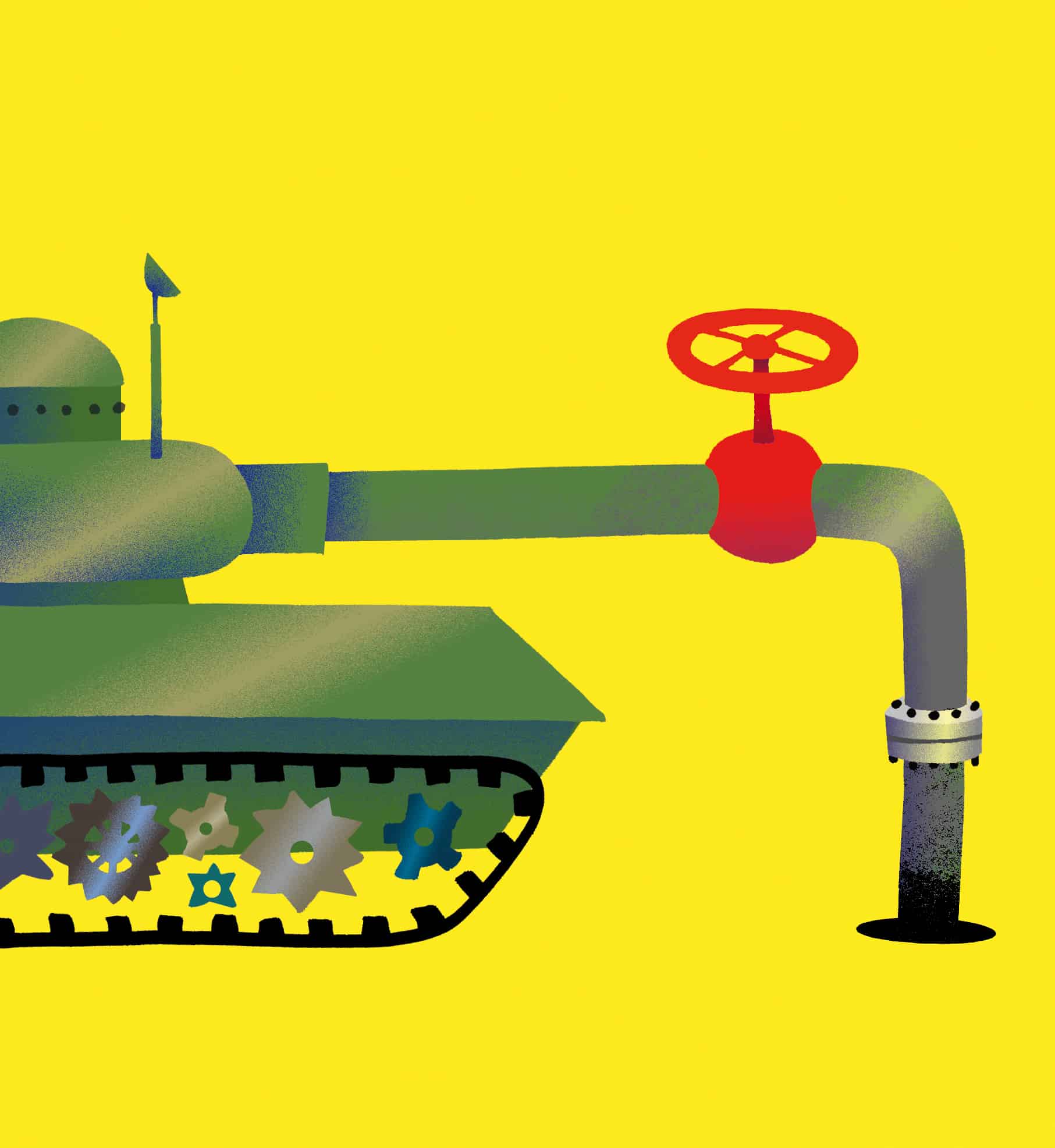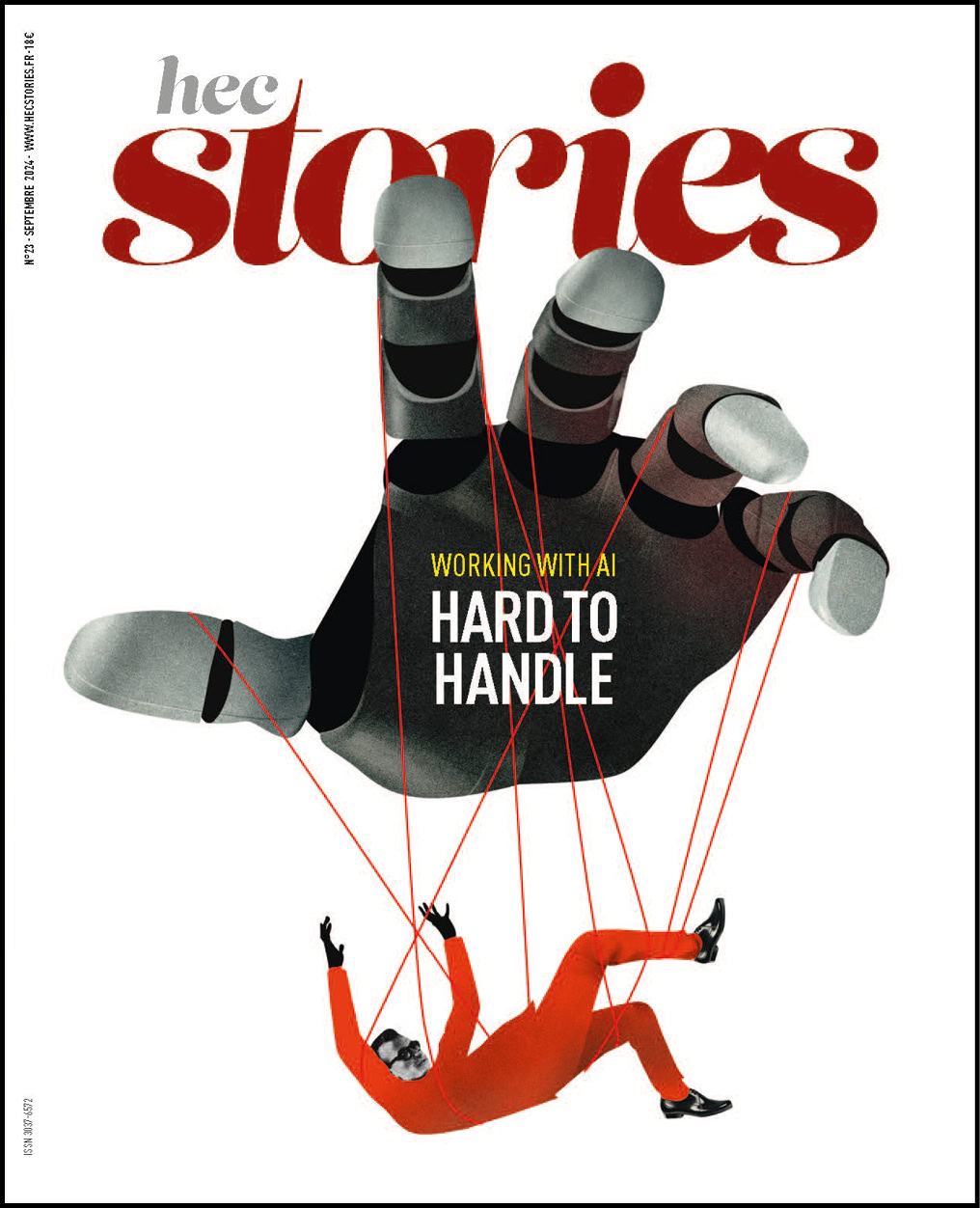10 questions on inflation

1. Why does inflation suddenly reappear?
Tomasz Michalski, Associate Professor of Macroeconomics at HEC Paris
First of all, it is important to point out that inflation is accurately measured by the consumer price index (CPI), which has been rising steadily since last year, particularly in the areas of energy, food, industry and services. In terms of causes, the rebound of the economy from the peak of the Covid-19 epidemic in 2020 is a major factor. During the initial containment, savings accumulated and when businesses reopened, there was mechanically more demand than supply, which caused prices to rise.
The other consequence of the pandemic was the disruption of trade routes due to the random confinements in different countries around the world: this impacted on the cost of transport, which was reflected in the price of goods and services. The combination of these two factors led to another phenomenon that was less expected: the appearance of various bottlenecks such as with semiconductors, which caused tensions in all areas concerned with these materials, from electronics to automobiles. Energy prices, also driven up by a decline in long-term investment in oil and a reduction in gas stocks, continued to rise, even before Russia went to war, which caused them to explode. If we were to miraculously return to the energy price level of three or four years ago, it would take six months to a year for inflationary pressure to subside.
2. Which sectors and companies benefit from inflation?
Jean-Christophe Caffet, Chief Economist at Coface
While inflation is always bad for households, it can be good for companies that manage to increase their margins. But in the current situation, there are more losers than winners. The price of many inputs has risen, and a company is not always able to pass on this increase in its selling price. Food and basic necessities continue to be sold even though their prices are rising. On the other hand, cars and clothing are suffering from postponed spending by households. Fossil fuel producers are benefiting from the economic situation: a group like TotalEnergies, which produces and markets oil and gas, is benefiting from the rise in prices.
On the other hand, the profitability of energy suppliers who buy their supplies at high prices and resell gas and electricity at regulated rates is tending to collapse. In the food industry, cereal farmers are benefiting from the surge in cereal prices. But farmers are having to pay more to feed their livestock. At the same time, consumers are likely to limit their consumption of meat as their purchasing power decreases. Some opportunistic companies may take advantage of the situation to raise prices even though their costs have not increased, believing that this would go unnoticed. Oil and gas exporting countries are benefiting from the price surge.
3. What is the specific explanation for the rise in energy prices?
Alexandre Liebermann (H.14), economic researcher in energy
About 40% of the pump price of petrol and diesel is linked to the price of oil, which reached 133 US dollars with the war in Ukraine. However, since 2014, we have seen a double phenomenon: an increase in demand of 1% per year despite the Covid-related confinements, and a reduction in supply, with a drop in investment in the sector of 7% per year. Structurally, therefore, prices were bound to rise. The war in Ukraine has further reinforced this trend, with Russia accounting for 10% of global supply. In 2008, the barrel had already reached 140 US dollars. But at that time, the euro/dollar rate was more favourable to Europeans: 1 euro was worth 1.3 to 1.5 US dollars, whereas today it is worth about 1.1 US dollars. In France, apart from the distributors’ limited margin (about 10% of the selling price), there is therefore only one factor on which we could act: the tax, which represents about half of the final price. But, in the context of energy transition, it is difficult to envisage significant reductions in taxation.
As far as gas is concerned, it should be noted that 99% of our consumption comes from abroad and, even at European level, supply is increasingly low, with only a few producer countries in the North Sea. After a colder than average winter in 2020 and a year 2021 marked, particularly in Asia, by an increase in demand linked to the economic recovery, stocks have dwindled and dependence on the outside world has increased. Prices, already very high at the end of 2021, have continued to rise with the current conflict in Ukraine, with 38% of gas consumed in Europe being imported from Russia.

4. Why is the war in Ukraine making inflation worse?
Georgiy Grokhovsky (E.10), President of the HEC Ukraine Chapter
The Russian army’s offensive in Ukraine has led to a humanitarian catastrophe and massive destruction of civilian infrastructure. The economic impact of the conflict is spreading throughout Europe and even the world, causing a slowdown in growth and an acceleration in inflation. Ukraine and Russia are major exporters of raw materials. The logistical disruptions and lack of visibility caused by the conflict have pushed up world prices, particularly for oil and natural gas. Russia is the world’s largest producer and exporter of gas. Last year, it supplied about 40% of the natural gas consumed in the European Union. It also sells palladium, nickel, aluminium and uranium, which are strategic metals for many industries, to other countries.
Some foodstuffs have also become more expensive during the conflict: the blockade of Ukrainian ports and economic sanctions against Russia are weighing on supply. Wheat, of which Ukraine and Russia account for 30% of world production, has reached a record level. Ukraine is also the world’s fourth largest exporter of maize and the largest exporter of sunflower oil, accounting for 53% of world exports! Demand has therefore shifted to substitute vegetable oils, which has led to a rise in the price of palm, soya and rapeseed oils.
5. What social consequences should be feared?
Augustin Landier, Professor of Finance at HEC Paris
Households that spend a large part of their budget on their car and food are the hardest hit by the current inflation. Rising prices are creating a very unequal shockwave, which is primarily affecting what can be called the France of the yellow waistcoats. It is remembered that the demands related to the price of petrol and speed limits had been the detonator of this crisis. On the other hand, people in urban areas, who benefit from public transport (typically, people in the Paris region who travel with a Navigo pass), are less affected by these increases. On a national level, we can therefore expect strong social tensions, especially after an election that only confirmed the polarisation of French society into two blocs.
Inflation mechanically reactivates the fear of downgrading. The executive will have to make strong gestures, but in a more targeted manner than before the elections because budgetary seriousness, with the expected rise in interest rates, will once again become an important issue. The social climate will therefore be inflammatory, with a demand for protection and wage increases from those who feel even poorer because of inflation. The population has become accustomed since Covid-19 to the state protecting individuals against macroeconomic shocks. It will therefore be impossible for the government to turn a deaf ear.

6. Do central banks still have the means to curb inflation?
Éric Mengus, Professor of Economics at HEC Paris
Central banks have two levers at their disposal: raising policy rates and/or restricting the asset purchase programmes set up after the 2008 financial crisis and strengthened during Covid-19. However, they may hesitate for two reasons. 1. An increase in interest rates limits the borrowing capacity of households and companies. Europe is suffering from a supply problem linked to bottlenecks in the global supply chain and rising energy costs. If we add to this a demand crisis, this could lead to a serious recession.
2. Public debt exceeds 100% of GDP in the US as in most European countries. An increase in policy rates would result in higher sovereign borrowing costs. With interest rates of +3 +4%, Italy could find itself with an unsustainable public debt. The ECB wants to avoid the fragmentation of the euro zone. It had already acted in this sense in 2012. Its then president, Mario Draghi, said that the ECB would do “whatever is necessary” to save the eurozone. For central banks, curbing inflation is possible but not desirable. They have preferred to tolerate it, hoping that it will remain temporary. But if they don’t fight it enough, this tolerance can amount to an “inflationary bias” and make inflation more persistent.
7. How does China manage to keep its inflation rate so low?
Jacques Gravereau (H.72), founder and honorary president of the HEC Eurasia Institute
Inflation in China is lower than in Western countries. It was 2.5% last year, and the government expects 3% this year. This target is likely to be met, as Xi Jinping will present a report on his achievements and run for a third term as president at the 20th Congress of the Chinese Communist Party in November. The components of Chinese inflation are the sum of contradictory trends. On the one hand, food prices have fallen overall, driven by the normalisation of the meat market: the serious epizootic that decimated two-thirds of the pig herd between 2018 and 2020 is over, and supply has almost returned to normal. Rice and wheat are subject to state price controls and government storage (with over a year’s supply of wheat!). There is still a surge in fruit and vegetables.
Energy prices are rising as China imports its fuel. Over the last four months, the price of a litre of petrol has risen from 1.08 to 1.45 euros (+35%) and there has been a significant fall in car traffic. While the producer price index has risen, the consumer price index remains contained. This is due to high key interest rates of around 3.7%, well above the rates of the Fed and the ECB. Debt is relatively expensive, which limits consumption. Finally, in a real estate market disrupted by the bankruptcy of the developer Evergrande, rents are stagnating after six years of continuous increase. For all these reasons, the “political” rate of 3% annual inflation should be maintained.

8. Can rising prices be sustained?
Gaetano Gaballo, Associate Professor of Macroeconomics at HEC Paris
To answer this question, it is important to understand that there are several factors that explain the current inflation phenomenon. Firstly, there are perfectly identified trigger mechanisms: tensions on the energy market, disruptions in the supply chain, the rise in commodity prices or the war in Ukraine. Central bank and financial market experts consider these events to be cyclical; their effects are temporary and should subside within a few years. But the other two aspects are more unpredictable. The first depends on the behaviour of households and companies. If inflationary fears take hold, consumption is likely to accelerate and wages will rise too quickly, two phenomena capable of creating a vicious circle of inflation and accelerating the rise in prices.
The second question concerns the very high amount of liquidity in the banking system. Over the last ten years, central banks have injected a lot of liquidity without any real impact on the economy. In the current context, if these reserves were to be used, this would cause a sudden and significant increase in inflation. So there are a lot of elements in the equation, which makes the prediction game difficult. If I had to try, I would say that inflation will not exceed 6 or 7% this year and should return to an acceptable level, around 2%, next year.
9. How does the ecological transition contribute to inflation?
Bertrand Badré (H.89), founder of the sustainable investment fund Blue like an Orange
If we talk about inflation in the sense of a general rise in prices, it is obvious that the ecological transition, which implies a change of model and significant investments, has an inflationary effect. From the moment we change our model, there is more demand and a constrained supply, which mechanically creates inflationary pressures. In addition, there is the drop in investment in fossil fuels and the rise in the price of carbon. What was probably underestimated when the Paris agreements were signed in 2015 was the cost of these investments. We must ensure that the ecological transition has a fair cost and does not affect the poorest countries more.
What is interesting about the effects of the embargo on Russia is that it gives us a foretaste of what an uncontrolled transition could be. States are struggling to meet their commitments and are having to deal with short-term contradictions, such as extending the life of coal-fired power stations or reopening shale gas mines. And also, the numerous debates around the taxation of fossil fuels: on the one hand, lowering taxes on fossil fuels would give some breathing space to the less well-off, on the other hand, it would send an ambiguous signal about climate commitments. I am confident that this “paroxysmal crisis” will accelerate our awareness and make us take the measure of the social impacts.

10. Can widespread use of bitcoin help to curb inflation?
Pierre Paperon (M.86), consultant in blockchain, NFT and metavers
When prices rise, money loses its value. Turning to rising values is a natural reflex. It would be tempting to believe that turning to the cryptocurrency bitcoin, which has increased in value by a factor of 50,000 in ten years, could protect us from inflation. But this is totally wrong. As things stand, bitcoin is an asset class just like gold, real estate or stocks. Of course, people who invested in bitcoin five years ago probably have more buying power at this point in time than those who didn’t, just like those who bought Apple shares, whose price has increased tenfold over the last four years. But, at the global level, generalizing bitcoin would in no way be a solution to inflation.
There would be no more stabilisation or containment and we would have the same vicious circle, with higher energy prices affecting commodity prices. In fact, whether people pay in euros, dollars, bitcoin, Apple shares or even shells, as the Phoenicians did, it makes no difference, the inflation mechanisms would remain. The only way to act on inflation through a crypto-currency would be to control an MDBC (central bank digital currency), as China is experimenting with the digital yuan. But that would mean defining prices, as Soviet Russia did, not to mention the possibility of access to the financial transactions of all citizens. So I don’t see this as a solution either.
Written by Marc Ouhanon and Thomas Lestavel
Published by La rédaction

